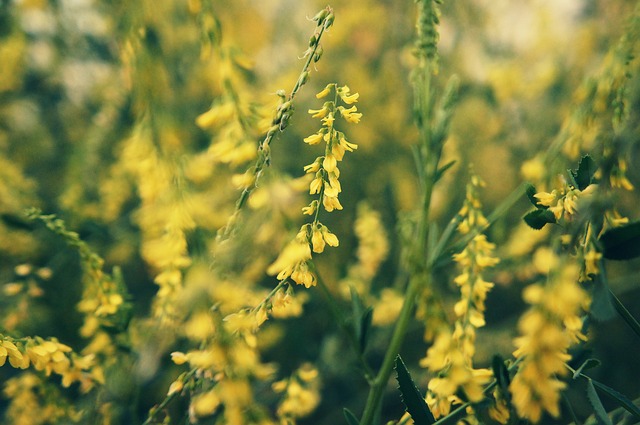Enjoy striking hues in a shadow garden—the area of your yard that receives the least amount of sunlight—by using these design recommendations. Combine shade-tolerant shrubs, perennials, and annuals to create a gorgeous retreat in every square inch of your yard.

Include a Garden Path with Shade
Divide and conquer is an effective approach to make any shaded backyard better. In this instance, a roadway made of pavers gives a mass of hostas and other foliage plants a feeling of direction and purpose.
Reduce the Grass You Plant, Especially in Shady Areas
A grass that receives insufficient light struggles. Hence, preserve a little area of turf in your yard and turn it into a landscaping feature by enclosing it with a shade garden rather than battling a large piece of fading grass. Alternatively, replace the grass with groundcovers that thrive in shade, such ajuga and heuchera.
Create a Haven in Your Shade Garden
By adding a seat and some flowers, you can turn an underutilized, shaded area of your yard into a chic and refreshing summer retreat. You may have the ideal spot to sip on a drink of lemonade on hot, bright summer days by creating a shaded refuge. Use repurposed landscaping materials to build a personal garden retreat structure without spending a lot of money.
Make Use of Plants with Various Textures
Even in a shade garden without flowers, mix plants with contrasting foliage colors and textures to create a dramatic, strong effect. Combining leaves with opposing traits is a simple method to generate texture combinations. Here, big-leaf umbrella plants, purple-leafed coral bells, and anemone provide a striking contrast with golden meadow rue.
Plant Vibrant Hues
Use shades of yellow and gold to bring attention to areas that are dark. In this instance, gold-leafed deutzia ‘Chardonnay Pearls’ and a hosta are complemented with golden Japanese forest grass.

Plant Groundcovers That Love Shade
Use groundcovers that grow slowly to suppress weed growth, making it simpler to manage your shadow garden. Additionally, a lot of varieties provide a lovely colored carpet that may give your landscape a live walkway. This golden creeping Jenny, for instance, literally sparkles under a planting of black mondo grass, purple coleus, and blue hostas.
Enhance Your Shade Garden with Art
Give your shadow garden flair by including bright, eccentric garden elements. This garden is made brighter and more charming by a collection of silver spheres that also serve as a focal point. Even more attention is created by the vibrant orbs floating in the water garden.
Select Eye-Catching Shade Garden Supplies
Consider making hardscape features the main attraction in your shadow garden rather than the plants themselves. An exquisite landscape design feature may be created by surrounding a walkway mulched with dark wood chips with golden groundcovers, ornamental grasses, or white-variegated bishop’s weed. Consider making a basic map of your yard to assist you in getting started.
Plant shrubs with flowers.
Shade gardens are often filled with perennials, like hostas, but don’t overlook the variety of flowering shrubs that may add height, color, and texture to your shaded areas. Here, rhododendron and azalea varieties provide a powerful springtime punch, and their evergreen foliage keeps the garden looking lovely throughout the winter.
Incorporate a Water feature
The sound of trickling water will provide an additional sensory element to your shade garden if you install a stream or other water feature. You just need a recirculating pump and a basic fountain to create landscape magic.
Use architectural components
To add interest to your yard, look for interesting and entertaining items. This garden has a range of pavement materials, antique barrels used as containers, and round millstones. They are a wonderful complement to the plants and provide a whimsical air.
Add Annuals That Love the Shade
To add color to gloomy areas, use annual plants. As annuals bloom all summer long, they are an ideal addition to a shady garden. The best kinds include iresine, browallia, torenia, impatiens, balsam, and coleus.
Make Use of Edging Plants
Use unique plants and materials to enhance your beds and borders. Here, the border is really colorful and textural thanks to the Japanese wild grass. Seek for whimsical rustic architectural accents, such as terracotta pots or other items that express your individuality.

Make Intriguing Plant Combinations
To create focus areas, scatter some gorgeous plant combinations around your shadow garden. Here, certain hosta varieties and ‘Gold Heart’ bleeding hearts look great next to a Japanese maple.
Plants in Big Batches
Almost all plant species seem better in huge clusters than they do in isolation. Here, golden sedum groundcover seems to be towering above drifts of astilbe.
Observe the Shapes of Shade Gardens
To make your garden a focal point, go beyond just color and texture. Draw the attention with forms of plants. For instance, the closely cut boxwood hedge echoes the clean lines of a terra-cotta urn and contrasts with the looser flora it surrounds.
Plant Trees Resistant to Shade
To keep your yard interesting, add layers. Under a canopy of towering trees, many shade gardens include relatively low perennials like hosta, bleeding heart, and astilbe. To create a varied height in your garden, use tall planters or architectural elements like pillars. You may also cultivate plants and shrubs that can withstand shadow.
